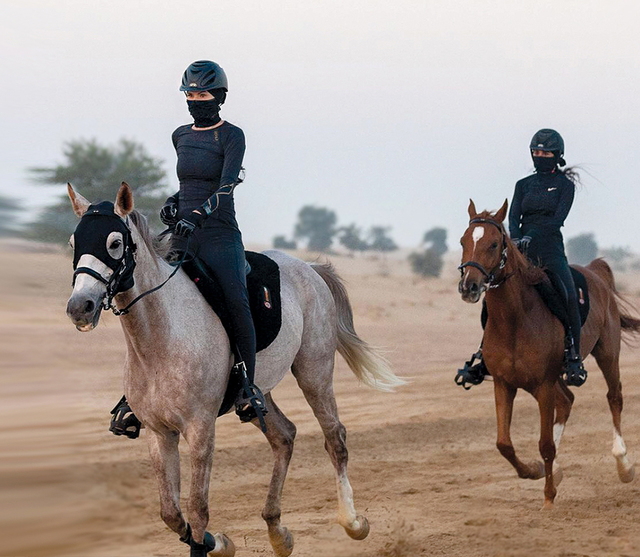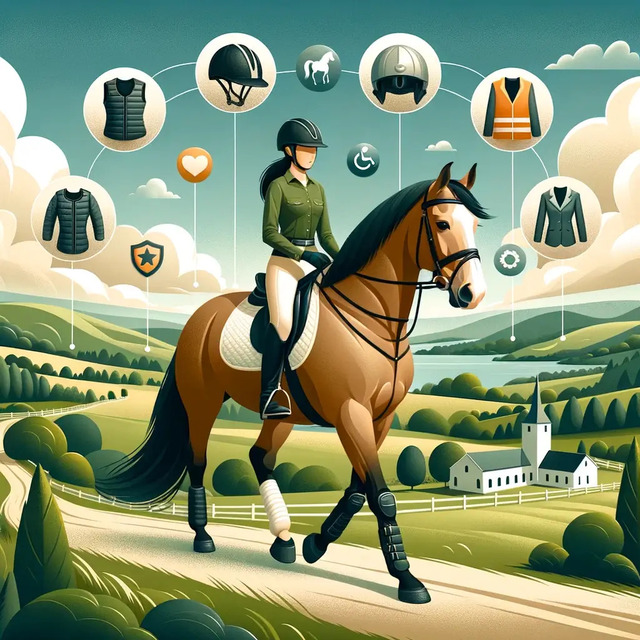Horseback riding is an exhilarating and rewarding activity, but it comes with its own set of challenges. For beginners, understanding how to approach the sport safely is crucial to ensuring a positive experience. Whether you're just starting or have a bit of experience under your belt, knowing the fundamentals—such as how to approach a horse, choosing the right gear, and understanding basic riding techniques—will help you enjoy horseback riding to the fullest. In this guide, we'll explore the history of equestrian culture, provide a beginner’s guide, outline must-have gear, discuss horse selection, and highlight the health benefits of equestrian sports.

Beautiful girl riding horse
Equestrian sports date back thousands of years. Early human societies used horses for hunting, transportation, and war, which eventually evolved into organized competitions. Ancient civilizations, such as the Greeks and Romans, were among the first to formalize equestrian activities, with chariot racing and horseback riding becoming major events.
In ancient Egypt, horses were revered, often depicted in art as symbols of nobility and power. These civilizations laid the groundwork for what would eventually evolve into the diverse array of equestrian disciplines we enjoy today.
The Middle Ages saw horses become even more integral to human life, particularly for knights who participated in jousting tournaments. These events not only tested the riders’ combat skills but also served as public spectacles for the nobility. The Renaissance period advanced horsemanship as an art form, with dressage (formalized horse training) taking shape as a popular leisure activity.
By the 19th and 20th centuries, modern equestrian sports like show jumping, eventing, and polo began to emerge. Today, the Federation Equestre Internationale (FEI) governs these sports globally, ensuring safe and fair competition.
Approaching a horse is a skill every beginner needs to learn. Horses are prey animals, and they can be startled by sudden movements, which may lead to unpredictable behavior. Here’s how to safely approach a horse:
Always approach from the front or side: Horses have a wide range of vision, but it’s best to approach them from the front or side so they can see you coming. Avoid sneaking up from behind, as it can startle them.
Let the horse know you’re there: As you approach, speak softly and calmly to the horse. Let them know you're present by softly calling their name or speaking in a gentle voice.
Maintain a calm demeanor: Horses are highly sensitive to emotions, so staying calm and composed is essential. Sudden or erratic movements can frighten them.
Extend your hand: Before reaching out to pet the horse, extend your hand slowly toward their nose. Horses often sniff and nuzzle newcomers as part of their social interaction.
Don’t approach a horse in distress: If the horse seems agitated or nervous, it’s best to wait until it calms down before trying to interact with it.
For a complete beginner, the best way to start is to take professional riding lessons. A certified instructor will guide you through the basics and ensure you're using the correct techniques right from the beginning. Here’s what you’ll learn:
How to Mount the Horse: Learning how to mount a horse properly is crucial for your safety. You’ll be taught how to mount with the least amount of stress on both you and the horse.
Basic Riding Posture: Maintaining the correct posture is essential for control and comfort. A balanced posture with your back straight and heels down will improve your riding experience.
How to Communicate with the Horse: Using reins, your legs, and your body weight, you’ll learn how to communicate with the horse to get it to walk, trot, canter, or stop.
When you’re just starting out, it’s essential to have the right gear to ensure both your comfort and safety. Here’s a checklist of what you’ll need:

equestrian equipment list
The most crucial piece of safety equipment for any rider is a helmet. Always wear a certified riding helmet to protect your head in case of a fall. Helmets should be snug, with a comfortable fit, and must meet safety standards.
A pair of sturdy riding boots with a slight heel are essential. These boots help protect your feet and lower legs and ensure that your feet don’t slip through the stirrups. They also offer additional ankle support.
Riding gloves provide a better grip on the reins and protect your hands from blisters. They also offer comfort, especially when riding for longer periods or in varying weather conditions.
For comfort and ease of movement, wear breeches or jodhpurs. These form-fitting pants reduce chafing and help maintain a good grip in the saddle. They’re made from stretchy materials that allow flexibility while riding.
If you plan on jumping or engaging in eventing, a body protector vest is essential. It protects your torso in case of a fall, especially in disciplines that carry a higher risk of injury, such as cross-country riding or jumping.
Selecting the right horse is an essential step in your riding journey. The ideal horse for you will depend on your skill level, size, and the type of riding you want to do. Here are some tips for choosing the right horse:
As a beginner, you’ll want a horse that is patient, well-trained, and easy to control. Horses that are too energetic or experienced can be challenging for someone just starting out. A calm and responsive horse will help you build your confidence and skills.
Young Horses (4-6 years old): These horses are typically more energetic and need an experienced rider who can manage their higher energy levels.
Older Horses (7+ years old): Older horses tend to have more experience and can be a good choice for beginners due to their steadier and calmer temperament.
The size of the horse is important for comfort and control. You should look for a horse whose size is proportional to your own height and weight. Some popular breeds for beginners include:
Quarter Horses: Known for their calm demeanor, they are perfect for new riders.
Irish Cobs: These gentle and easy-going horses are often used for beginners due to their friendly nature.
Arabians: Arabians are intelligent and adaptable, making them a good option for both beginners and experienced riders.
Horseback riding isn’t just about enjoyment; it also provides numerous physical and mental health benefits. Here’s how equestrian sports can improve your well-being:
Horseback riding is an excellent way to build muscle strength, particularly in the core, legs, and back. It also improves coordination and flexibility. The physical demands of riding, such as maintaining posture and balance, provide a full-body workout.
Riding helps improve cardiovascular fitness by increasing your heart rate, especially during trotting or cantering. It’s a great form of low-impact exercise that enhances endurance and stamina.
Equestrian sports have been shown to have a positive effect on mental health. The bond between rider and horse can help reduce stress and anxiety. The focus required to ride also improves concentration and mindfulness. Many riders experience a sense of peace and relaxation when spending time with their horses.
Equestrian sports are not only physically demanding but also highly artistic. Whether in dressage, show jumping, or eventing, equestrian performances combine athleticism with precision and grace.
Dressage is often referred to as "horse dancing." In this discipline, horses perform a series of intricate movements, or tests, in an arena. These movements are choreographed to music, requiring riders to communicate with their horses in a precise and harmonious manner.
In show jumping, riders and horses navigate a course of jumps and obstacles. The goal is to clear the jumps in the fastest time possible, without knocking down any rails. Show jumping tests a rider’s timing, control, and coordination, as well as the horse’s agility and strength.
Eventing combines dressage, cross-country, and show jumping. It’s considered one of the most challenging equestrian sports because it requires riders to excel in a variety of skills and adapt to different environments.
Equestrian sports are not only an excellent way to stay fit but also an opportunity to form a deep connection with horses. However, safety must always be a top priority. By following the steps outlined in this guide—such as learning how to approach a horse, investing in the proper gear, and starting with professional lessons—you’ll set yourself up for a safe, enjoyable, and rewarding equestrian experience.
animal tags: equestrian-sports
We created this article in conjunction with AI technology, then made sure it was fact-checked and edited by a Animals Top editor.